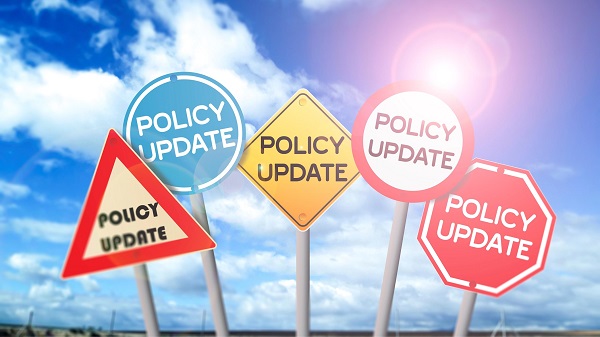

Article

FTC Announces Changes to Second Request Process
- Antitrust
- 4 Mins
This year is on track for record-setting merger and acquisition filings in the U.S., with projections at around 3,500 by the close of the year. In recent years, filings have been on the rise, but were only approaching 2,000 annually so this increase is quite significant. Limited resources and time constraints have challenged federal agencies when reviewing merger proposals, especially when it becomes apparent that a Second Request is needed to address antitrust concerns. The Federal Trade Commission (FTC) and Department of Justice (DOJ) only have 30 days for an initial investigation to determine if they need to issue a Second Request. To help streamline the review process and allow the FTC to manage the increased cases, new procedures were recently announced.
The Recent FTC Update
In order to have better insight into whether a merger could violate antitrust laws, the FTC will begin reviewing these transactions with more scrutiny. To do that, they have developed additional factors to guide this process, such as evaluating cross-market effects and the influence on competition when investment firms are a party to the process. This should be a signal for organizations to thoroughly vet their proposals before filing to make certain the transactions can pass rigorous standards.
There are now additional factors organizations need to consider that aid the merger review process. The following requirements are intended to streamline review, highlight production challenges earlier, and ensure all relevant data is provided. This includes providing information about the business responsibilities of employees or agents relevant to the transaction and data maintenance practices. To conform more with the DOJ model, organizations will also need to provide up-front information to the FTC about how they apply eDiscovery tools, such as culling technologies and Technology Assisted Review (TAR) workflows to identify any data responsive to Second Requests.
Another important update applies to aligning privilege log practices with the DOJ’s protocols. The FTC will no longer allow so-called “partial logs,” noting that the full picture is necessary to determine whether all privilege assertions have been legally justified.
There are also new security measures in place to safeguard the confidential documents associated with a Second Request while allowing access to the entire Commission to aid with review. This eliminates the need to request access, which was previously a discretionary function that often impeded the investigatory process. The FTC intends to modify the Model Second Request to incorporate all the outlined changes soon. More revisions may occur in the future if other inefficiencies are highlighted.
Achieving Antitrust Compliance
To comply with these new requirements, parties should consider how best to avoid noncompliance and promote cooperation during a merger or acquisition investigation, including:
-
Ensure merger workflows incorporate the up-front information required. This includes the factors announced that aid with antitrust violation review, gathering baseline data about employee responsibilities and data maintenance, and eDiscovery tool implementation. This will affect all phases from 4C filings to reviews and negotiations. Although the Model Second Request has not yet been officially updated, be proactive and immediately incorporate process changes relevant to this portion of an investigation.
-
Review and solidify current eDiscovery protocols. Consider adopting/adapting your existing DOJ protocols to comply with the FTC instruction to submit the description of the workflow prior to training a predictive coding model. Major changes include confirming the subject matter expert(s) who will train the model, providing target recall metrics, and applying a similar validation procedure synonymous with the DOJ Second Request process by providing several random samples for agency review.
-
Carve out more time for privilege log creation and production. The FTC’s elimination of the partial log option means that organizations will need to be prepared to utilize greater resources and efficient workflows to create full and complete privilege logs. Coupled with the need to stay on schedule during an investigation, this change makes partnering with a provider to help with production and creation of privilege logs a beneficial option. It is of the utmost importance that the chosen provider be knowledgeable about DOJ and FTC requirements, uses vetted technology to streamline privilege review efficiently, and offers an experienced talent base of reviewers to assist with privilege log workflows.
-
Monitor additional FTC developments. Organizations should anticipate that the FTC will publish the amended Model Second Request shortly. As it becomes clear what process changes will help with review and where gaps remain, there will likely be more directives that could affect the merger review process. If this occurs, organizations will need to revisit their policies and practices again.
Closing Thoughts
In many ways, FTC’s adoption of a Model Second Request that more closely resembles the DOJ streamlines the approach for complying with a document request, irrespective of the source. Make sure you work with a provider whose antirust merger review solutions comply with applicable regulatory requirements. Also, make sure that the provider is up to date on recent changes or amendments to the Second Request process of the relevant agency, e.g., the DOJ’s “five percent privilege downgrade rule.” While these changes can add complexity and nuance to an already expedited compliance schedule, streamlining the application of technology and privilege log creation should ultimately lead to a more streamlined compliance process.
To learn more about Epiq’s antitrust offerings, click here.
The contents of this article are intended to convey general information only and not to provide legal advice or opinions.